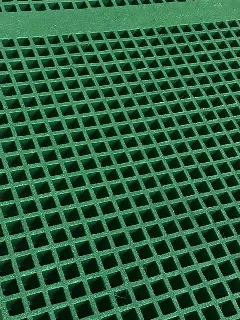loading...
- No. 9, Xingyuan South Street, Dongwaihuan Road, Zaoqiang County, Hengshui, Hebei, China
- admin@zjcomposites.com
- +86 15097380338
- Welcome to visit our website!
Exploring Membrane Housing Applications in Water Purification and Filtration Technologies
Understanding Membrane Housing A Critical Component in Water Purification Systems
Membrane housing is a vital component in the realm of water treatment and purification technologies. As concerns around water quality and environmental sustainability continue to escalate, the significance of effective filtration systems has never been more pronounced. Membrane housing serves as the framework that holds and protects the membrane filtration elements, a crucial part that facilitates the separation of contaminants from water. This article delves into the structure, types, advantages, and applications of membrane housing.
Structure and Function
Membrane housing is designed to encapsulate and safeguard membrane elements from physical damage, while also providing a pathway for water flow. Typically made from durable materials such as fiberglass, PVC, or stainless steel, membrane housings are engineered to handle varying pressures and temperatures, depending on the application. These housings vary in size and configuration, allowing for flexibility in design to meet specific filtration demands.
Inside the housing, membrane elements are installed. These membranes can be based on various technologies, including reverse osmosis (RO), ultrafiltration (UF), and microfiltration (MF). Each type of membrane is characterized by its pore size, which determines what contaminants can be filtered out. For instance, RO membranes are capable of removing dissolved salts and larger organic molecules, making them ideal for producing high-purity water.
Types of Membrane Housing
There are various types of membrane housing that cater to different industrial and commercial applications. Common types include
1. Spiral Wound Membrane Housings This is the most widely used configuration for reverse osmosis systems. The spiral-wound design allows for a larger surface area in a compact size, enhancing efficiency in filtration.
2. Tubular Membrane Housings Tubular housings are ideal for viscous or particulate-laden feed waters as they can prevent clogging and fouling. This design allows for easy cleaning and maintenance.
3. Plate and Frame Housings This type provides flexibility and easy access for maintenance. They are often used in batch processes due to their modular design.
4. Block Membrane Housings Used primarily in small systems, block housings are compact and easy to install. They are common in household water filtration systems.
membrane housing

Benefits of Membrane Housing
The advantages of using membrane housing extend beyond simply providing structure and support for membranes
. Some key benefits include- Protection Membrane housing shields the delicate membrane from physical damage, chemical corrosion, and environmental factors.
- Efficiency A well-designed membrane housing optimizes flow patterns, reducing pressure loss and maximizing filtration efficiency.
- Easy Maintenance Many membrane housings are designed for easy access, facilitating quick maintenance and membrane replacement. This reduces downtime and operational costs.
- Scalability Different configurations enable systems to be tailored for small-scale to large-scale applications, making them suitable for various industries.
Applications of Membrane Housing
Membrane housing is employed across a multitude of sectors. In the water treatment industry, it is instrumental for municipal water supply, wastewater treatment, and industrial process water purification. Additionally, industries such as pharmaceuticals, food and beverage, and desalination heavily rely on membrane technologies for quality control and compliance with health regulations.
Moreover, as the demand for clean water grows worldwide, innovations in membrane housing are evolving. Research and development in materials and designs aim to enhance the efficiency, lifespan, and sustainability of these critical components.
Conclusion
In summary, membrane housing is an essential element in modern filtration systems, playing a pivotal role in safeguarding and optimizing the membrane filtration process. With diverse designs and applications, it continues to support the urgent demand for clean water across various industries. As technology advances, membrane housing will undoubtedly evolve, contributing significantly to sustainable water management solutions for future generations. Understanding its importance can help industries and consumers alike appreciate the complexities behind the water purification processes that keep our communities thriving.
-
GRP Structures: The Future of Lightweight, High-Performance EngineeringNewsJun.20,2025
-
FRP Water Tank: High-Performance Storage for Corrosive and Clean Water SystemsNewsJun.20,2025
-
FRP Square Tube: The New Industry Standard for Chemical and Structural ApplicationsNewsJun.20,2025
-
FRP Pultruded Profiles: The Ultimate Choice for Lightweight Structural StrengthNewsJun.20,2025
-
FRP Handrails: The Safer, Smarter, and Stronger Choice for Modern InfrastructureNewsJun.20,2025
-
FRP Grating: The Smart Solution for Durable, Lightweight Industrial FlooringNewsJun.20,2025
-
Why Choose a Galvanized Water Tank for Your Storage NeedsNewsMay.21,2025
